1946–1947 A Year of Firsts… and Simpler Times Celebrating Montgomery 70th Anniversary Series Part 2 of 2*
Enthusiasm among the first class of 186 students was high during the College’s first semester in 1946, as evidenced by the remarkable list of firsts in the College archives. Students established the first student council and the first yearbook committee—which produced the first edition of the yearbook, Accolade. The same committee coordinated with art students to create the first College seal, still in use today.
Dr. Bernice F. Pierson, founding member of Montgomery Junior College’s full-time faculty, recalled the community’s warm welcome for members of the new junior college.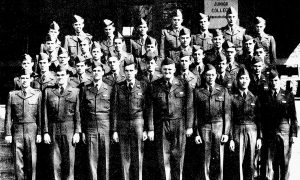
As the inaugural class of students and faculty turned the calendar to 1947, school spirit and energy for building a first-rate institution stayed strong. By 1947, a Montgomery Symphony Orchestra formed, comprising students and members of the community. It later became affiliated formally with the College (as did the Montgomery County Light Opera Association in the mid-1950s). Pierson’s descriptions of all-College picnics, held at the Meadow Brook Recreation Center in Rock Creek Park, seem particularly quaint:
“The students, faculty, and their families… swinging on the swings, playing baseball, eating gobs of ice cream and singing and singing until dark.”
Looking to improve conditions for his energetic college community, which was borrowing classroom space at Bethesda-Chevy Chase High School and limited to evenings and Saturday courses, Dean Hugh Price acquired two war surplus buildings (BOQs, bachelor officers’ quarters) to house the biology and chemistry labs, faculty and administrative offices, a bookstore, and student lounge. Another small building, provided by the Federal Works Agency, housed the new athletic director Frank Rubini, and an equipment room.
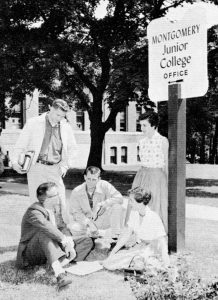 In fall 1947, enrollment doubled as the College added a sophomore class.
In fall 1947, enrollment doubled as the College added a sophomore class.
Part-time faculty—professional scientists (some recruited from the National Cancer Institute and the Navy Medical Center), artists, writers, businessmen, and others—proved invaluable to academic outcomes that garnered approval for accreditation by the Middle States Association of Colleges and Secondary Schools by 1950. The credential signaled to the community it had succeeded in establishing an institution that delivered on its promises: to provide higher education on par with four-year schools. The workforce-oriented choices, including secretarial and business, and “technical-occupational” courses provided practical options for a population eager to work and earn college degrees after World War II.
“These were frugal, enterprising years during which the College operated after-school hours in borrowed high school facilities and temporary wooden buildings.”
—William C. Strasser Jr. 1
With the entire national capital region booming after the war, the College was all but assured continued growth. By academic year 1949–1950, enrollment reached 473 students. In the summer of 1950, the Board of Education purchased the Bliss Electrical School in Takoma Park—six buildings on six acres—for $350,000. The move allowed the College to expand programs and services and increase the number of people it served by operating on its own campus for the first time.
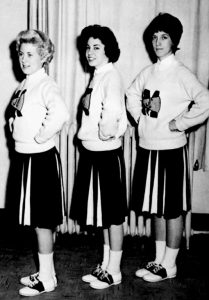 “The pleasant neighborhood setting of the campus, shaded by large and overarching trees, created a comfortable, community-like environment… The campus site was small enough, and the number of students and faculty few enough,” writes Strasser, “that people could readily and naturally interact daily, become acquainted easily, and develop a sense of community and a personal identity on campus.”
“The pleasant neighborhood setting of the campus, shaded by large and overarching trees, created a comfortable, community-like environment… The campus site was small enough, and the number of students and faculty few enough,” writes Strasser, “that people could readily and naturally interact daily, become acquainted easily, and develop a sense of community and a personal identity on campus.”
MJC continued to grow and branch out through its first 70 years, eventually dropping the “Junior,” dropping football, dropping the yearbook, and dropping programs that no longer met the needs of a changing workforce (e.g., shorthand courses). But among Maryland’s 16 community colleges, it retains its title of “first in the state”—and more importantly, remains rooted in the community. With a budget now in the millions and a student enrollment of 60,000, the College’s next 70 years will likely continue its legacy of innovation and service to all who desire higher education in Montgomery County.
Source:
1 “Montgomery College in its Formative Years 1946–1979; William C. Strasser Jr. The Montgomery County Story, Montgomery County Historical Society quarterly. Strasser was the College’s fourth president, from 1966 to 1979.
*This follows a segment published in Insights fall 2016. Read the first segment here.
Photos courtesy of MC Archives
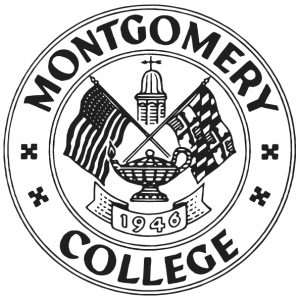
The College seal features the cupola of Bethesda-Chevy Chase High School and crossed American and Maryland flags, encircled by the institution’s name and date of founding. Seventy years later, the seal remains in use largely unchanged today.
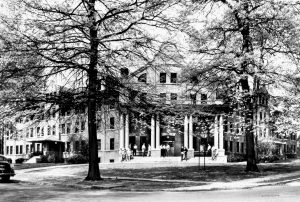




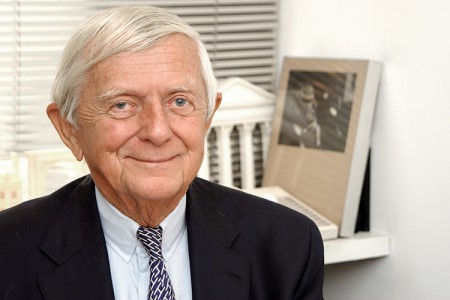
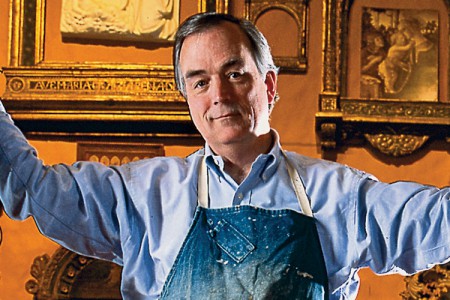
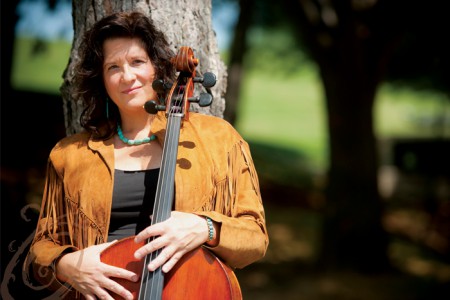

Follow Us